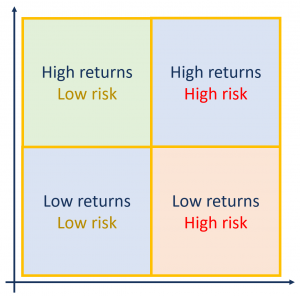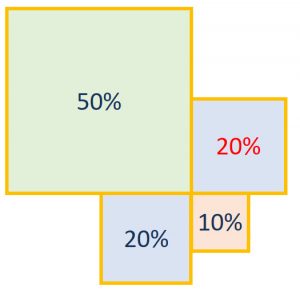 Subject matter experts are highly sought after by project managers and project teams to provide unique expertise for solving a problem or meeting a technology challenge.
Subject matter experts are highly sought after by project managers and project teams to provide unique expertise for solving a problem or meeting a technology challenge.
They often act as key advisers because of their deep understanding of a certain topic. This may be an area of knowledge, a process, a system, software or a piece of equipment. The unique perspective of a subject matter expert can inform content within the project, or the execution of the project itself.
The subject matter expert balancing act
A project’s subject matter expert will have spent a lot of time developing their specialisation. Either they’ve worked in a role that has allowed them to gain understanding of the system or topic, or they’ve studied extensively in the area. Inside your company this might be software specialists, technicians or engineers. Outside your company this might be lawyers, accountants or local government representatives.
Integrate your Subject Matter Experts with your ITM Platform environment
So what value does a subject matter expert provide?
Their input can often change the scope and direction of a project. They may have an understanding of systems or processes that will alter the approach the team is taking, or they may be able to provide an understanding around limitations of a piece of equipment. Without the specialised knowledge and expertise of the subject matter expert, it could be difficult to know what you are working with.
Where could this be a risk?
It’s important to be aware that your subject matter expert has invested a lot of time working in their speciality area. Whether they are aware of it or not, they have probably formed some strong opinions on it.
For example, a subject matter expert may have specialist knowledge about a certain system your company uses. However, they may be unsure of how this system interacts with newer software, apps or social media sites, and how they can be utilised together to improve the customer experience.
Similarly, while a subject matter expert may know a lot about a specific product, they could be unfamiliar with your audience itself. This would make it difficult for them to understand how the product will be used by this customer demographic.
The takeaway message from this is that if you’re working with a subject matter expert, consider how their potential bias weighs up against the value of the knowledge they’re providing. It’s a balancing act. Don’t take everything they say as the whole truth, but remember that they have unique insights to offer, which can contribute to your project.
Strategies for dealing with potential subject matter expert bias
Here are a few things to keep in mind if you’re working with a subject matter expert:
1. Stay aware of potential biases
Keep in mind that while you’re dealing with an expert, their particular views on the subject matter may not take into account the relative position of this knowledge in your project. Their research and knowledge should complement that of other experts on the team.
Any bias could also result in the objective of your project being skewed. Don’t allow this to override the purpose and outcome of the project.
2. Have research proofed before it is implemented
While it’s tempting to have subject matter experts heavily involved in the entirety of a project due to their superior knowledge and expertise, it’s a good idea to leave them out of the implementation process if possible. This allows someone else to look over their research and identify any potential bias before it is implemented for the project.
3. Have a number of subject matter experts working together
Another good idea is to engage several subject matter experts to work on the project together. It’s even better if they come from completely different backgrounds, as they will have different opinions. This will mean that several people’s input comes together to produce the final product and the opportunity for individual bias is lessened.
While it may not be possible (or affordable) to find two or three subject matter experts, at least have your expert work closely with other members in the team who can apply their own knowledge and perspective to the project.
Managing subject matter experts and stakeholders is a big part of what a project manager does day-to-day: oftentimes, the most crucial aspects of projects are related to leadership, communication and engagement problems.
One of the best ways you can learn more about how to work with subject matter experts is by completing a project management course online. Southern Cross University offers an online Master of Project Management course, designed to develop your critical thinking and leadership skills.
This article was produced by Southern Cross University in collaboration with ITM Platform.
Receive the latest blogs directly into your inbox
 Too much innovation can be bad
Too much innovation can be bad
Innovation is dangerous. Despite the many benefits of marketing new products and services, it is important for any private organization not to underestimate the complications of practicing innovation on a day to day basis. In short, for a private organization with limited resources, too much innovation without sufficient control, can quickly lead to disaster.
Start managing your innovative projects in a unified portfolio with ITM Platform
Innovative ideas are, by definition, very risky. When you launch an innovative project, the future, the success and acceptance in the market, and often the technical difficulties for its development are unknown.
Solution: portfolio management of innovative projects
Over time, some innovative projects will fail, while others will succeed, they will come to market and may even become established.
This means that, in order to achieve successful innovation, it is imperative to fail, close defective projects, expose oneself to risk and, ultimately, lose financial resources that will not produce results.
So that the risk of innovation does not overwhelm your organization, it is essential to treat innovative projects as a portfolio that is managed according to unified criteria. Therefore the team that manages the portfolio has the important task of monitoring the organization's innovative projects.
Responsibilities include the following:
- Demand a clear business argument about the commercial feasibility of the development and its relationship with the needs of customers.
- When there are no spontaneous candidates for innovation, it is essential to request new proposals in the strategic directions and areas that have been identified.
- Establish evaluation criteria for proposals.
- Evaluate the proposals, discarding those that are too risky or do not promise sufficient benefits.
- Decide investment limits for innovative projects, as well as total risk capacity.
- Compose a balanced portfolio.
- Coordinate the management of projects that make up the portfolio, especially in the case of shared resources.
How to monitor a portfolio of innovative projects?
When composing the portfolio and with a view of monitoring innovation, it is important to:
- Have an appropriate balance between different types of projects, such as small technical innovations that improve an existing product or totally new products and services; and types and levels of risk.
- In addition, it is essential that innovative projects are not linked to each other and can fail or continue independently. Otherwise, if projects share risks and have dependencies, failure in a component could have an impact on the whole portfolio. The fundamental idea of a balanced portfolio is diversification and experimentation: that each project has its own life.
- Achieve a number of projects low enough to be feasible with available resources (which will often be shared) and high enough to allow the introduction of new products and an interesting flow of projects for the portfolio's half-yearly and annual evaluations.
Evaluation of innovative projects
As we indicated above, in order to evaluate innovative projects and decide whether to keep them in the organization’s portfolio, it is important to define a series of benchmarks. Although it will depend on the sector and the characteristics of each entity, some typical criteria are:
- Estimated cost
- Development time
- Critical resource consumption
- Alignment with the strategic factors of the organization
- Innovative and differential character
- Technical success probabilities
- Commercial success probabilities
- Ease of imitation by competitors
Once the criteria are selected, it is important that they be assigned a weighting that allows final estimates to be made. The relative weight of each factor is usually a measure of the organization's situation. For example, in consulting firms that rely on networks of collaborators, the consumption of critical resources will be of little importance, whereas the limitation of development time may have more weight than in other more stable organizations, where innovative projects can be developed with stability over the years.
The score is a good estimate of the value of the project. However, the viability of an innovative portfolio depends on special attention to the composition of its risks. Therefore, beyond that final score reached by the projects based on the selected criteria, it is recommended that the composition of the portfolio of innovative projects make use of an assessment matrix.
The assessment matrix of innovative projects
Many of our readers are already familiar with the ITM Platform risk assessment matrix. The evaluation of innovative projects allows a completely analogous technique to be used.
In the assessment matrix of innovative projects two variables appear:
- Expected commercial return of the project
- Risk level

Ideally, all projects will be placed in the upper left quadrant of the matrix, they may be scarce and there may be many projects in the balanced quadrants marked in blue (where returns are proportional to risks).
Bearing in mind that it is good practice to include projects of different types with different levels of risk and knowing that, no matter what we do, some of the innovations will not be successful, a good result is the allocation of the project budget with Percentages that follow a proportion like that of the illustration.

From the location of innovative projects in the matrix and their combination with the punctuation according to the criteria listed above, it should be much easier to make the final decision about which proposals to accept and which to discard.
Innovation will remain risky; but well-organized monitoring will increase the organization's chances of success and learning, with the potential to turn unsuccessful projects into better, more ambitious proposals in line with the pulse of the market.
Receive the latest blogs directly into your inbox
 During the past year, various subjects were suppressed in all educational establishments within the education system in Finland, and the teaching method known as Phenomenon-based Learning (PhenoBL) was introduced. In fact, this method involves a collaborative and empirical work between students and teachers through an action that can be considered a step of applied innovation in the field of education, the management of interdisciplinary projects.
During the past year, various subjects were suppressed in all educational establishments within the education system in Finland, and the teaching method known as Phenomenon-based Learning (PhenoBL) was introduced. In fact, this method involves a collaborative and empirical work between students and teachers through an action that can be considered a step of applied innovation in the field of education, the management of interdisciplinary projects.
Although this method is part of a more generic paradigm that has more than half a century of existence, Project-Based Learning, its adoption as a national educational policy is novel and is based on the diagnosis that "The most important and influential results today are the results of cooperation and networking", which is why learning based on individual examination of static knowledge has lost much of its value.
How do you learn through projects in school?
Compared to passive memorization programs, Project Based Learning engages children in open-ended, project-based activities. The starting point can be a question or a problem that the students are confronted with, and proactively find answers that bring theoretical knowledge into reality through a transformative approach. This approach, popularized in the United States by great pedagogical reformers like John Dewey, recognizes that the traditional model of compulsory school was based on educating for obedience. Many of the students who were socialized into being quiet for eight-hour shifts would would eventually have a simpler transition to jobs as industrial workers.
An outdated model: as is well known, workers and manufacturing are disappearing in post-industrial countries, being replaced by the demand for tertiary workers capable of finding new solutions and adapting to changing situations.
While the old school practiced obedience, memorization, and repetition, project-based education generally involves teamwork, physical activity, critical thinking, and evaluation of the resources available to solve a problem. No less important is the promotion of the person's responsibility over results. In other words, the paradigm tries to put students in the role of researchers, while teachers stop imparting knowledge by authority to move to facilitate a process of direct experience.
Researchers
Within Project Based Learning, students are active participants in their education. Specifically, they can choose topics or subjects that they would like to learn, plan the learning development together with their teachers and, finally, evaluate their process.
Mentoring teachers
On the other hand, this paradigm also implies important changes in the teaching profession. In other words, they no longer have the usual control over their courses, and their work is not based on master classes, being more like a mentor.
The Finnish case
Finnish schools are required to have in their curriculum, for children aged 7-16 with at least an extended period of Phenomenon-Based Learning. Instead of teaching subjects in isolation, such as mathematics, science and history, multidisciplinary issues such as climate change or social issues are tackled, using resources from a variety of disciplines.
The new role of the educator is based on the internalization of the following positive conditions:
- If you want to increase curiosity, let them question you
- If you want to develop problem-solving skills, communicate school knowledge with real problems and encourage students to work together to find solutions
- If you want to improve understanding, combine knowledge and skills of different subjects
- If you want to train citizens who develop society, promote inclusivity and participation, you should facilitate positive critical thinking and provide opportunities to generate real change
- If you want to reinforce confidence in yourself and the desire to learn, make constructive and honest comments. Never humiliate or discourage someone who is learning.
Many of these principles have positive consequences for professional organizations and for an open innovation culture. The attention to multidisciplinary teams and the stimulation of the creativity of team members are, at the same time, the inspiration of this educational model and the result of it.
Educators in Finland rely on online platforms to encourage discussion among their students about what topics and concepts they would like to learn more in order to deepen the phenomenon in question.
One of the main benefits of Phenomenon-Based Learning is the perception of a problem from different points of view. Even before the student knows the distinction between different disciplines, he learns that it is possible to consider a phenomenon from different and complementary points of view, the sum of whose parts offers a more complete understanding of reality. Just as there is no single way to analyze a phenomenon, there is no single answer to its construction: each student can build in their own way the path that combines discovery and creation.
Other benefits that are often emphasized are:
- the excitement caused by solving a problem or by putting together the pieces of an idea facilitates the integration of knowledge. Learning (or working) does not have to be boring: it can be exciting.
- problem solving in the classroom gives children the confidence to choose future careers that include problem solving;
- the ability to gather pieces to understand the world as a whole, is what will grow students as informed and productive citizens.
Not a trend, but the future of education
Some critical voices have pointed out that the method of learning by projects involves the practical abolition of subjects as we know them today. And with them, the baggage of general culture shared (at least in theory) by all citizens. Thus, depending on the type of projects that students have done, they can leave behind important gaps in all areas of knowledge; from trigonometry to recent history. However, the Finnish National Board of Education has repeatedly emphasized that traditional classes have not disappeared in Finland. Quite the opposite: this method of education continues to coexist with traditional subjects.
However, the reality is that the method is becoming more popular. In Spain, for example, a model similar to the one that works in Finland is already known under a similar name, Project Learning. Specifically, the schools of Jesuits in Catalonia – which educate more than 13,000 students - who in recent years have eliminated subjects, exams and schedules, also transforming their classrooms into work spaces where children acquire knowledge through project management. In addition, its pedagogical model is entitled "Horizon 2020", which implies that this and similar models are not only a trend in education, but the future.

 Too much innovation can be bad
Too much innovation can be bad